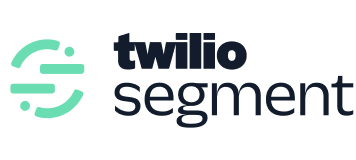Guide users through onboarding based on real-time behavior while identifying key steps that lead to successful onboarding.
Desired Outcome: The desired outcome for building a campaign to accelerate onboarding for new users is to streamline and enhance the onboarding process, ensuring that new users quickly understand and engage with the app, leading to long-term user retention and satisfaction. This includes:
- Faster Onboarding Completion: Achieve a higher percentage of users completing the onboarding process in a shorter time frame, reducing the drop-off rate during onboarding.
- Increased User Engagement: Enhance user engagement by providing personalized guidance and support based on real-time behavior, ensuring users are actively interacting with the app's key features.
- Higher User Retention: Improve user retention rates by ensuring that new users have a smooth and positive onboarding experience, making them more likely to continue using the app.
---
Step 1: Add the required Sources
In your workspace, add a new prod or dev source for your website and (optional) another for your order processing system. This should be your website where checkout events will be tracked and the system that captures completed orders. These sources will be responsible for collecting the required Track Events and sending them to Segment.
Sign Up or Log In to Segment
First, access the Segment platform by signing up or logging into your existing account.
Create a Source for Your Website
A source in Segment acts as the origin of data you collect, such as user interactions on your website.
- In your Segment workspace, navigate to the Sources section.
- Click the Add Source button.
- From the catalog of sources, select JavaScript (for websites) and then click Add Source.
- Provide a name for your source, e.g., "Company Website - Dev or Prod".
- Optionally, add labels for organization.
- Enter your website URL.
- Click Create Source button
Install the Segment Snippet
After creating your source, Segment will provide you with a JavaScript snippet.
- Copy the JavaScript snippet provided by Segment.
- Paste the snippet into the <head> tag of your site to install Segment.
If you need to add a source for your server, mobile app, or any other touchpoint please refer to the documentation for easy setup
Step 2: Track your events
In order to build the funnels needed to encourage new user signups, you'll need to track three key events: Signed In, “Onboarding Step Completed",“Onboarding Completed’ from your website..
- Signed In: Manually add this event to your site (See Spec: Track documentation).
- Onboarding Step Completed: Manually add this event to your site (See Spec: Track documentation).
- Onboarding Completed: Manually add this event to your site (See Spec: Track documentation).
In this example, we're not only tracking events like ‘Signed In’, but also sending additional properties like ‘first_name’ and ‘email’. These properties provide important context about the event and can be extremely valuable in your analysis. Learn more about properties.
You should trigger Identify when the user performs the ‘Signed In’ event because this allows you to tie a user to their actions and record traits about them, i.e., first_name, last_name, email. This can further be used for personalized messaging or ads in your onboarding campaign.
Only Identify calls can add and update user traits to a profile. For connections-only customers, the Identify event can still be mapped to downstream destinations to create/update user profiles.
Step 3: Add Destinations
Choose where you want to send the collected data—for this use case we recommend using in-app messaging or connecting to a paid media destination like Facebook Ads.
- In your Segment workspace, add a new destination.
- Select your preferred tool from the catalog. This destination will use the collected data as needed.
Step 4: Test your setup
Ensure your data collection is configured correctly:
- Perform test signups on your development site.
- Check if the events are correctly recorded in your Segment debugger and analytics destination.
The Source Debugger is a tool that helps you confirm that API calls made from your website, mobile app, or servers arrive to your Segment Source, so you can troubleshoot your Segment setup even quicker.
Your data may not show up instantaneously and there may be a delay, but once the data is flowing you are ready to move to the next step.
Step 5: Analyze and activate
With accurate setup and data flow:
- Analyze the data to understand user behavior throughout the onboarding process.
- Identify drop-off points and optimize them to improve conversion rates.
- Deploy targeted engagement strategies to convert interested users into completing the most essential onboarding steps required for your product or service.
In the below example you can see several different options to creatively accelerate onboarding by targeting users in the process with targeted messaging specific to your product and their own use case.
Visual of onboarding email campaign example
Final thoughts
Accelerating the onboarding process for new users is a critical strategy for ensuring the long-term success of your app. By guiding users through the onboarding process based on real-time behavior and identifying key steps that lead to successful onboarding, you can significantly enhance user engagement and retention. The step-by-step process outlined above—from adding the required sources and tracking events to analyzing and activating data—provides a comprehensive framework for achieving these goals.
Want to discuss this topic with the community? Start a thread in our Discussion Forum.
